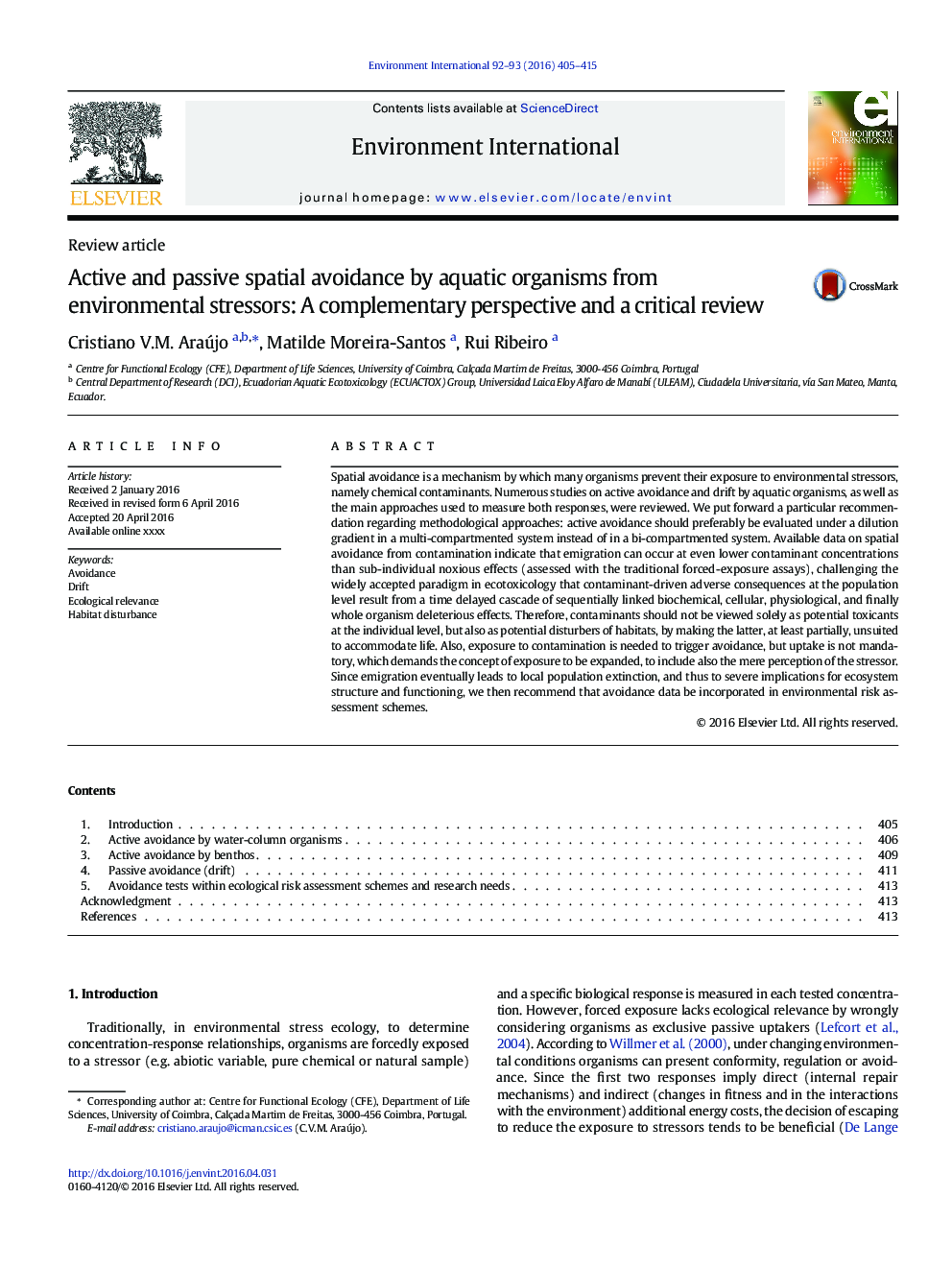| کد مقاله | کد نشریه | سال انتشار | مقاله انگلیسی | نسخه تمام متن |
|---|---|---|---|---|
| 6313022 | 1619037 | 2016 | 11 صفحه PDF | دانلود رایگان |
عنوان انگلیسی مقاله ISI
Active and passive spatial avoidance by aquatic organisms from environmental stressors: A complementary perspective and a critical review
ترجمه فارسی عنوان
اجتناب مکانی فعال و منفعل توسط موجودات آبزی از عوامل استرس زای محیطی: دیدگاه مکمل و بررسی انتقادی
دانلود مقاله + سفارش ترجمه
دانلود مقاله ISI انگلیسی
رایگان برای ایرانیان
کلمات کلیدی
اجتناب از، رانش ارتباط زیست محیطی، اختلال در محیط زیست،
موضوعات مرتبط
علوم زیستی و بیوفناوری
علوم محیط زیست
شیمی زیست محیطی
چکیده انگلیسی
Spatial avoidance is a mechanism by which many organisms prevent their exposure to environmental stressors, namely chemical contaminants. Numerous studies on active avoidance and drift by aquatic organisms, as well as the main approaches used to measure both responses, were reviewed. We put forward a particular recommendation regarding methodological approaches: active avoidance should preferably be evaluated under a dilution gradient in a multi-compartmented system instead of in a bi-compartmented system. Available data on spatial avoidance from contamination indicate that emigration can occur at even lower contaminant concentrations than sub-individual noxious effects (assessed with the traditional forced-exposure assays), challenging the widely accepted paradigm in ecotoxicology that contaminant-driven adverse consequences at the population level result from a time delayed cascade of sequentially linked biochemical, cellular, physiological, and finally whole organism deleterious effects. Therefore, contaminants should not be viewed solely as potential toxicants at the individual level, but also as potential disturbers of habitats, by making the latter, at least partially, unsuited to accommodate life. Also, exposure to contamination is needed to trigger avoidance, but uptake is not mandatory, which demands the concept of exposure to be expanded, to include also the mere perception of the stressor. Since emigration eventually leads to local population extinction, and thus to severe implications for ecosystem structure and functioning, we then recommend that avoidance data be incorporated in environmental risk assessment schemes.
ناشر
Database: Elsevier - ScienceDirect (ساینس دایرکت)
Journal: Environment International - Volumes 92â93, JulyâAugust 2016, Pages 405-415
Journal: Environment International - Volumes 92â93, JulyâAugust 2016, Pages 405-415
نویسندگان
Cristiano V.M. Araújo, Matilde Moreira-Santos, Rui Ribeiro,
